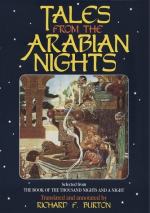Appendix.
Notes on the stories contained in volume XVI.
By W. F. Kirby.
The Say of Haykar the Sage (Pp.1-30).
Haykar’s precepts may be compared advantageously with those of other nations of the East and West (at a corresponding stage of civilisation) which, as a rule, follow very similar lines. Many of them find their parallels not only in Proverbs and Ecclesiastes, as we might reasonably expect, but even in the Havamal of the Elder Edda, respecting which Thorpe remarks in his translation (i. p. 36 note): “Odin is the ‘High One.’ The poem is a collection of rules and maxims, and stories of himself, some of them not very consistent with our ideas of a supreme deity.” The style of the Icelandic poem, and the manners of the period when it was composed, are of course as wide apart from those of Haykar as is Iceland from Syria, but human nature remains the same.
Pp. 22-24.—Two classes of subterfuges similar to those employed by Haykar are common in folk-tales. In one, the hero vanquishes, and generally destroys, his adversary (usually a giant) by imposing on his credulity, like Jack when he hid himself in a corner of the room, and left a faggot in his bed for the giant to belabour, and afterwards killed the giant by pretending to rip himself up, and defying the other to do the same. In other cases, the hero foils his opponents by subterfuges which are admitted to be just, but which are not intended actually to deceive, as in the devices by which the blind Shaykh instructs the merchant to baffle the sharpers, in one of the Sindibad stories (vol. vi., pp. 202-212, No. 135x., of our Table). In the present story Pharaoh was baffled by the superior cunning of Haykar but it is not made quite clear whether he actually believed in his power to build a castle in the air or not. However the story probably belongs to the second class.
P. 25.—Twisting ropes out of sand was a device by which Michael Scot baffled a devil for whom he had to find constant employment. (Cf. Scott’s “Lay of the Last Minstrel,” and notes.)
The History of Al-Bundukani (Pp. 31-68).
I believe the “Robber-Caliph” is sometimes played as a burlesque, for which it is well adapted. The parallel suggested between the Caliph and a robber may remind the reader of the interview between Alexander the Great and the Robber, in “Evenings at Home.” One cannot help sympathising with the disappointed young Merchant who acted as an informer, and feeling glad that he got off with a whole skin.




